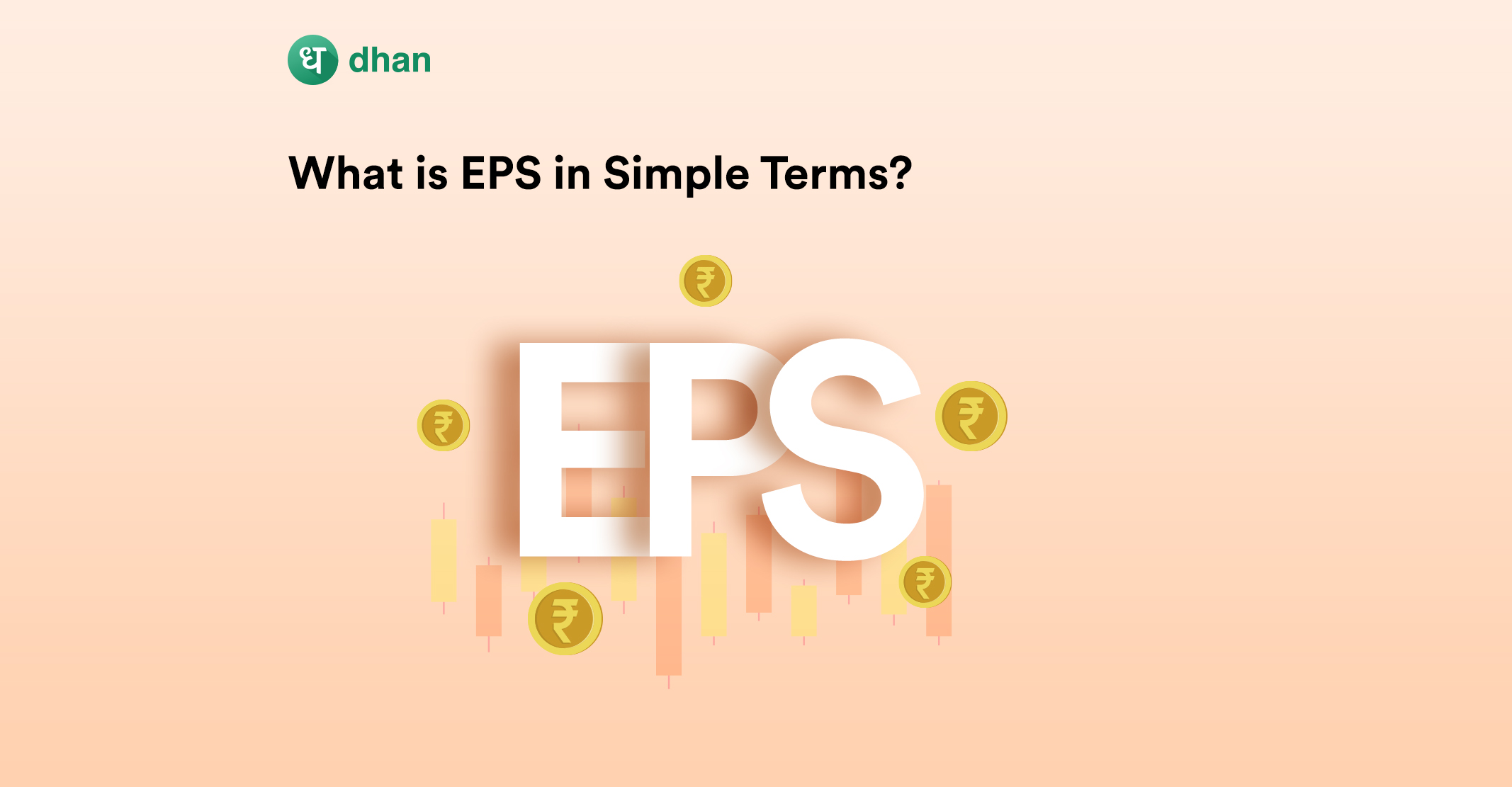Investing in share market requires a nuanced understanding of technical terms, especially if you want to determine the value of a company you’re investing in. The problem is, jargon like Earnings Per Share (EPS) in the share market can be hard to understand.
After all, nobody hands out a glossary of investment terms after college graduation. But we’re here to help you! In this blog, we’ll walk you through the meaning of EPS in simple terms and how it is calculated in the real world with examples.
What is the Meaning of Earnings Per Share?
Earnings per Share or EPS is the measure of a company’s profitability. It is the result you get by dividing a company’s net profits by the number of outstanding common stock it has on the market.
EPS can be a useful metric for investors because it can determine the value of a company. A high EPS means that the company is more profitable relative to its share price.
A low EPS indicates that the company’s finances are poor. That said, EPS is a basic measure of the financial health of a company, not an indicator of its future growth.
At the same time, EPS is a part of another stock evaluation metric called the P/E ratio, where the E stands for Earnings (aka EPS). Now that you know the basics of EPS, let’s explore how EPS calculations are done.
How to Calculate Earnings Per Share?
In order to calculate EPS, the net profit of a company is divided by the common shares outstanding. The formula to get the basic EPS of a share is thus:
EPS= (Net profit – Preferred Stock Dividends) ÷ Total no. of shares outstanding
Notice how the term common stock appears in EPS calculations? That’s because the net profit is obtained by subtracting dividends paid on preferred stock.
These are shares that give the holder priority access to a company’s income but no voting rights. Another way to calculate EPS is by factoring in corporate actions that can lead to more stocks being issued.
Think of stock splits, stock options, convertible bonds, and more that add more shares to the market. The formula for diluted EPS thus becomes:
EPS= (Net profit – Preferred Stock Dividends) ÷ (Total no. of shares outstanding + converted shares)
In order to account better for changes in shares, EPS is also calculated by using the weighted average of the number of outstanding common shares.
EPS= (Net profit – Preferred Stock Dividends) ÷ Weighted average of total no. of shares outstanding
Earnings Per Share Example
Here’s the formula of EPS at work with a real-world example.
| Stock | No. of Shares Outstanding | Net Income (in Rs Cr) | Basic EPS |
| MRF | 42,41,143 | 6,69,00,00,000 | 1,577 |
| Shree Cement | 3,60,80,748 | 23,36,00,00,000 | 647 |
| TCS | 3,65,90,51,373 | 3,84,49,00,00,000 | 105 |
| HDFC Bank | 5,54,55,40,976 | 3,81,51,00,00,000 | 68 |
| Bharti Airtel | 5,88,43,14,930 | 58,82,00,00,000 | 9 |
The Types of EPS in Share Market?
There are 5 types of EPS metrics that are used to report earnings by companies on their annual report. Each type of EPS serves the same purpose with a different degree of accuracy (for stock investors).
1. Book Value EPS
Book value EPS is nothing but the net asset value of a company divided by its total shares outstanding. Net value is the difference between the total assets and liabilities of a company.
Book Value EPS indicates the sum an investor would get if the company is liquidated. By that logic, the formula for Book Value EPS is:
Book Value EPS= (Total equity available to common stockholders) ÷ (Total no. of shares outstanding)
A higher Book Value EPS generally indicates that a company is undervalued by the stock market.
2. Cash EPS
Cash EPS is the ratio of cash flow to the number of shares outstanding. The formula to calculate Cash EPS is straightforward:
Cash EPS= (Operating cash flow) ÷ (Total no. of shares outstanding)
Cash EPS is also known as operating income. Just like a higher Book Value EPS is a positive metric when investing in stocks, a higher Cash EPS signifies that the financial health of a company is solid.
3. Ongoing EPS
Ongoing EPS is calculated by dividing the ordinary net income by the total number of shares outstanding. “Ordinary” because the calculation excludes abnormal events.
Ongoing EPS= (Ordinary net income) ÷ (Total no. of shares outstanding)
There’s a variation of Ongoing EPS called Pro Forma EPS. It’s a variation because you have to take into account some assumptions while using the Ongoing EPS formula.
4. Retained EPS
Retained EPS indicates the amount of profit retained by the company. It is calculated by:
- Adding the net income and earnings held as of date
- Subtracting the sum of #1 by the total dividends paid
- Dividing the amount left over by the total number of shares outstanding
Retained EPS calculation is thus represented like this in mathematical form:
Retained EPS= (net income + earnings held – total dividends paid) ÷ (Total no. of shares outstanding)
5. GAAP EPS
Generally Accepted Accounting Principles (GAAP) is a standard way of creating financial reports. The EPS obtained from GAAP is known as GAAP EPS.
Why is EPS in Share Market Important?
When evaluating stocks, metrics like EPS can serve as an indicator of a company’s reliability. For example, a high EPS generally means that a company is financially stable.
But a one-size-fits-all approach may not work when trying to map EPS to a company’s share price. At times, a stock may plummet even when the EPS is high. The inverse can be true as well.
That’s why it is important to pick stocks based on multiple factors like EPS, P/E, Beta, and others when investing in the share market.
Happy Investing!
- A Simple Guide to Pension Plans: What They Are and How They Work
- How to Open an NPS Account?
- Financial Planning for NRIs: A Guide to Smart Investing
- Due Dates and Penalties for Late Filing of Income Tax Returns
- Tax Benefits for Senior Citizens in India
Experience lightning-fast trading and investing in the stock market ⚡
FAQs on EPS in Share Market
Q. Is higher EPS better?
A higher EPS means that a company is profitable. While this may not have a direct impact on shares, profitable companies may offer dividends and bonuses while being open to positive market support.
Q. Is a low EPS bad?
A low EPS generally indicates that a company is struggling to make money. This means that existing investors may not stand to earn dividends or bonuses. Furthermore, a loss-making company may not be attractive to potential investors.
Q. Is a negative EPS good?
A negative EPS is not known to be good as it means that a company is making a loss. Companies that lose money may not be attractive to long term investors, a fact that can be a blocker to new investments flowing into a negative EPS stock.
Disclaimer: This blog is not to be construed as investment advice. Trading and investing in the securities market carries risk. Please do your own due diligence or consult a trained financial professional before investing.




Comments are closed.